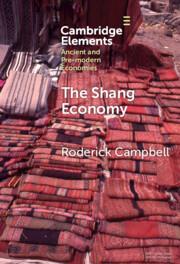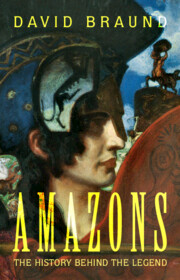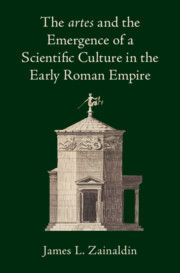Refine search
Actions for selected content:
23916 results in Ancient history
Part 3 - Narrating the Ridda
-
- Book:
- Ibn Aʿtham al-Kūfī and his Kitāb al-Futūh
- Published by:
- Gerlach Books
- Published online:
- 30 August 2025
- Print publication:
- 31 March 2025, pp 247-248
-
- Chapter
- Export citation
Part 2 - Textual Tradition
-
- Book:
- Ibn Aʿtham al-Kūfī and his Kitāb al-Futūh
- Published by:
- Gerlach Books
- Published online:
- 30 August 2025
- Print publication:
- 31 March 2025, pp 161-164
-
- Chapter
- Export citation
4 - The Wider Context: The Theme of the Ridda in Arabic Historiography
-
- Book:
- Ibn Aʿtham al-Kūfī and his Kitāb al-Futūh
- Published by:
- Gerlach Books
- Published online:
- 30 August 2025
- Print publication:
- 31 March 2025, pp 249-288
-
- Chapter
- Export citation
Contents – Volume 1
-
- Book:
- Ibn Aʿtham al-Kūfī and his Kitāb al-Futūh
- Published by:
- Gerlach Books
- Published online:
- 30 August 2025
- Print publication:
- 31 March 2025, pp v-xii
-
- Chapter
- Export citation

The Shang Economy
-
- Published online:
- 27 March 2025
- Print publication:
- 10 April 2025
-
- Element
- Export citation

Amazons
- The History Behind the Legend
-
- Published online:
- 26 March 2025
- Print publication:
- 24 April 2025

The artes and the Emergence of a Scientific Culture in the Early Roman Empire
-
- Published online:
- 22 March 2025
- Print publication:
- 13 February 2025
Dedication
-
- Book:
- Athens, 403 BC
- Published online:
- 28 February 2025
- Print publication:
- 20 March 2025, pp vii-viii
-
- Chapter
-
- You have access
- HTML
- Export citation
Introduction
-
- Book:
- Athens, 403 BC
- Published online:
- 28 February 2025
- Print publication:
- 20 March 2025, pp 1-30
-
- Chapter
-
- You have access
- HTML
- Export citation
Bibliography
-
- Book:
- Athens, 403 BC
- Published online:
- 28 February 2025
- Print publication:
- 20 March 2025, pp 329-354
-
- Chapter
-
- You have access
- HTML
- Export citation
Chapter 3 - Archinus or the Victory of the ‘Moderates’
-
- Book:
- Athens, 403 BC
- Published online:
- 28 February 2025
- Print publication:
- 20 March 2025, pp 96-137
-
- Chapter
-
- You have access
- HTML
- Export citation
Index
-
- Book:
- Athens, 403 BC
- Published online:
- 28 February 2025
- Print publication:
- 20 March 2025, pp 355-358
-
- Chapter
-
- You have access
- HTML
- Export citation
Chapter 7 - Hegeso or the Family Torn Asunder
-
- Book:
- Athens, 403 BC
- Published online:
- 28 February 2025
- Print publication:
- 20 March 2025, pp 204-220
-
- Chapter
-
- You have access
- HTML
- Export citation
Chapter 9 - Nicomachus and the Servants of the City
-
- Book:
- Athens, 403 BC
- Published online:
- 28 February 2025
- Print publication:
- 20 March 2025, pp 235-250
-
- Chapter
-
- You have access
- HTML
- Export citation
Acknowledgments
-
- Book:
- Athens, 403 BC
- Published online:
- 28 February 2025
- Print publication:
- 20 March 2025, pp xxvii-xxviii
-
- Chapter
-
- You have access
- HTML
- Export citation
Chronology
-
- Book:
- Athens, 403 BC
- Published online:
- 28 February 2025
- Print publication:
- 20 March 2025, pp xxix-xxx
-
- Chapter
-
- You have access
- HTML
- Export citation
Chapter 4 - Socrates and the Voices of Neutrality
-
- Book:
- Athens, 403 BC
- Published online:
- 28 February 2025
- Print publication:
- 20 March 2025, pp 138-165
-
- Chapter
-
- You have access
- HTML
- Export citation
Chapter 5 - Lysimache
-
- Book:
- Athens, 403 BC
- Published online:
- 28 February 2025
- Print publication:
- 20 March 2025, pp 166-187
-
- Chapter
-
- You have access
- HTML
- Export citation
Chapter 2 - Thrasybulus and the Democratic Resistance
-
- Book:
- Athens, 403 BC
- Published online:
- 28 February 2025
- Print publication:
- 20 March 2025, pp 71-95
-
- Chapter
-
- You have access
- HTML
- Export citation
Foreword
-
- Book:
- Athens, 403 BC
- Published online:
- 28 February 2025
- Print publication:
- 20 March 2025, pp xiii-xxvi
-
- Chapter
-
- You have access
- HTML
- Export citation
